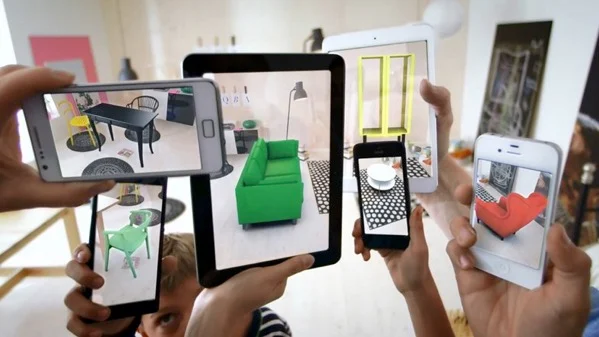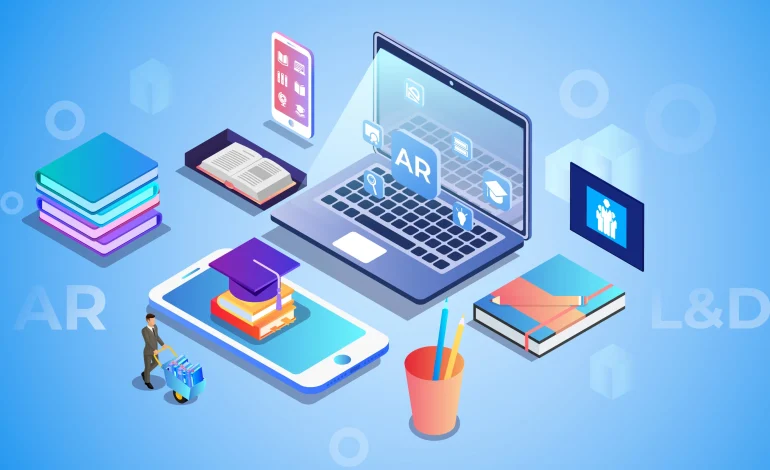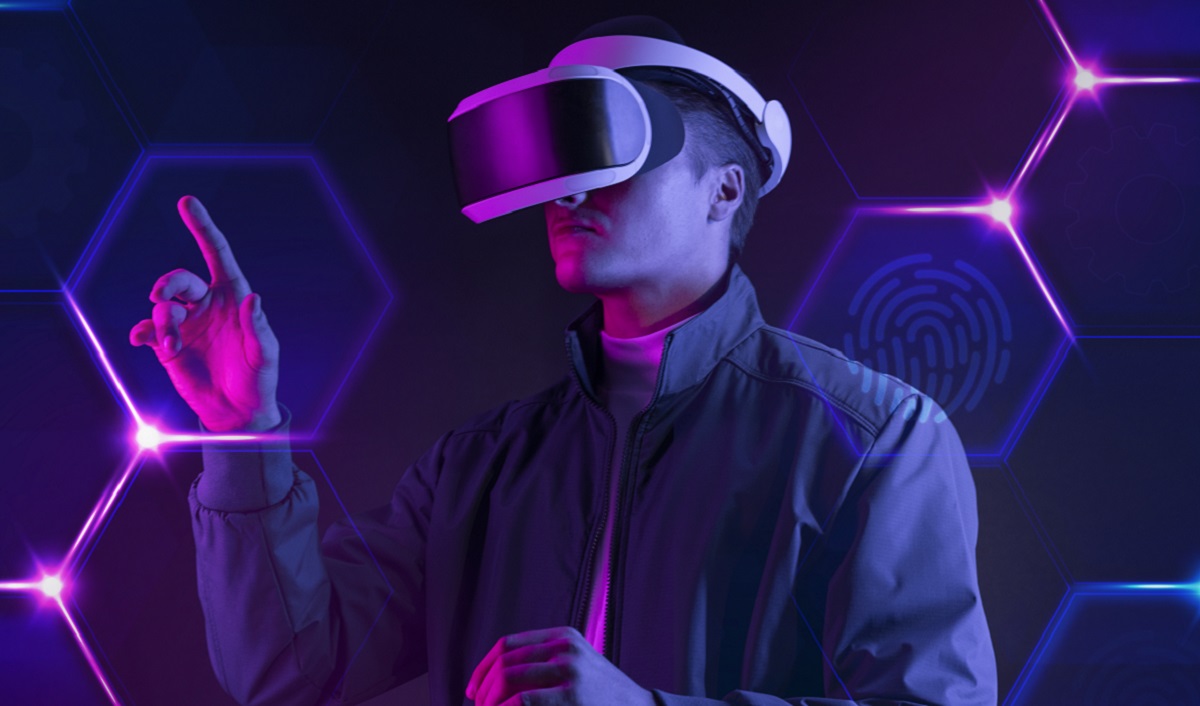Intersection of AR And Ecommerce: A New Shopping Experience

As technology advances, so does our shopping experience. One exciting development is the intersection of AR (Augmented Reality) and eCommerce, creating a new way to shop online. With the help of AR, shoppers can now experience products in a more interactive and immersive manner, leading to a more exciting and satisfying shopping experience. The potential of this intersection of AR and eCommerce is limitless, and it is already revolutionizing the way we shop.
Introduction
The rise of eCommerce has revolutionized the way we shop. With the convenience of online shopping, we can purchase anything from the comfort of our homes. However, online shopping needs the immersive experience we get while shopping in physical stores. This is where Augmented Reality (AR) comes in. AR has been transforming the shopping experience, bringing it to a new level. In this blog post, we will explore the intersection of AR and eCommerce and the potential benefits for businesses and consumers. Let’s dive in!
Current state of eCommerce
Online shopping has become an integral part of our lives in recent years. People rely more on eCommerce websites, from clothes to electronics, to fulfill their shopping needs. In 2020, global eCommerce sales hit a record $4.28 trillion, projected to increase even further in the coming years. This exponential growth can be attributed to the convenience and accessibility of eCommerce, which allows consumers to purchase products from anywhere at any time. However, despite this growth, eCommerce still faces several challenges. One of the biggest challenges is replicating the in-store shopping experience that customers love and crave. Online shopping may offer convenience, but it needs more personal touch and sensory experience that comes with in-store shopping. To address this challenge, many eCommerce companies are turning to Augmented Reality (AR) to enhance the online shopping experience.
How is AR being integrated into eCommerce?

Augmented reality (AR) has become one of the most exciting developments in the eCommerce industry. This technology allows customers to experience products more immersive and interactive than ever before, making their shopping experience much more exciting and engaging. Here are some ways in which AR is being integrated into eCommerce:
Virtual Try-On: With AR technology, customers can try on products virtually before purchasing. For example, some makeup companies have created AR apps that allow users to see what different makeup products look like on their faces without applying makeup. Similarly, some clothing brands have introduced virtual try-on apps that enable customers to see what outfits look like on them before making a purchase.
AR Product Demos: AR technology also enables businesses to create product demos that are more interactive and engaging. For instance, furniture companies can create AR demos that show how a particular piece of furniture looks in a specific room. Customers can better understand how the product looks and feels in their space before purchasing it.
AR Product Visualization: With AR technology, businesses can create virtual models of their products, which customers can view from all angles. This feature enables customers to explore a product in a way that wasn’t possible before. For instance, a customer can consider a car’s interior and exterior design features in detail before purchasing.
AR technology has revolutionized people’s shopping, providing a more interactive, engaging, and personalized experience. By integrating AR technology into eCommerce, businesses can significantly improve customer engagement, boost sales, and create a competitive edge in the market.
Potential benefits for businesses and consumers
With the integration of AR technology in eCommerce, there are numerous potential benefits for both businesses and consumers. Let’s explore some of them:
- Enhanced user engagement: AR enables businesses to offer their customers an interactive and engaging experience. It allows customers to interact with the products virtually, giving them a feel of how they will look and feel in real life.
- Increased conversions: AR can effectively increase conversion rates by making the buying process more convenient and transparent for customers. Customers can make more informed purchasing decisions by seeing and interacting with the products virtually.
- Better customer experience: AR offers a unique and personalized shopping experience for customers, which can help to build brand loyalty and positive customer feedback. This can help businesses stand out in a crowded eCommerce marketplace.
- Better decision-making: AR enables customers to visualize products in a real-life context before purchasing. This allows them to make informed choices and reduces the likelihood of buyer’s remorse.
- Enhanced shopping experience: AR offers a fun and interactive shopping experience, allowing customers to explore products in a new way. This can make the shopping experience more enjoyable and exciting.
- Time-saving: With AR, customers can virtually try on clothes or visualize furniture in their homes without leaving. This saves time and effort for customers and makes the buying process more convenient.
In summary, A.R. integration in eCommerce offers numerous benefits for businesses and consumers. With the ability to enhance user engagement, increase conversions, and provide a better shopping experience, companies can set themselves apart in a competitive marketplace. AR can make shopping more fun, informative, and convenient for customers, resulting in better purchasing decisions. As AR technology advances, we can expect to see even more exciting possibilities for the future of eCommerce.
Future of eCommerce with AR

The potential for AR in eCommerce is immense, and as the technology continues to evolve, the possibilities for its integration become even more exciting. Shortly, we can expect to see eCommerce sites using AR technology to create personalized shopping experiences for consumers, where they can virtually try on clothing, visualize furniture in their homes, or even see how a new car would look in their driveway.
One potential area where A.R. could significantly impact eCommerce in reducing returns. By allowing consumers to virtually “try on” clothing and accessories before purchasing, they can better understand how the item will fit and look on them, reducing the need for returns due to sizing or style issues. This could save businesses millions in returns and make the shopping experience more enjoyable for consumers.
Another area where AR could be valuable is creating more engaging product descriptions. With AR, businesses can create interactive experiences for customers to showcase their products better, providing a more exciting and memorable experience that may increase sales.
As more consumers become comfortable with AR technology and expect more immersive experiences in their shopping, we expect eCommerce to become more focused on offering personalized, interactive experiences. The possibilities are endless with the combination of AR and eCommerce, and it’s exciting to see how businesses will continue to innovate and create new shopping experiences for consumers.
Conclusion
As we’ve seen, integrating AR technology into eCommerce transforms the shopping experience for businesses and consumers. By providing immersive and interactive shopping experiences, AR is driving increased engagement, sales, and customer loyalty. While still in its early stages, the potential benefits of eCommerce are clear. From virtual product try-on and enhanced visualization to personalized recommendations, AR is opening up new business opportunities to engage with consumers. As AR advances, we can expect to see even more exciting developments in eCommerce, including integrating A.I., machine learning, and other cutting-edge technologies. In short, the intersection of AR and eCommerce is creating a new frontier of shopping experiences that will only continue to evolve in exciting ways.





